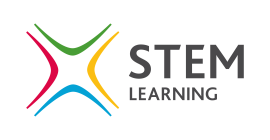Energy changes
'Energy’ is an abstract idea and hard to define. Students often use the word in a variety of everyday contexts and in a way which differs from the scientific use of the word.
A good understanding of the language surrounding the teaching of energy, including energy stores and energy pathways, and students' misconceptions is therefore needed before planning a scheme of work on this topic. For information on some of the ideas students can bring to the classroom, and which can often prove difficult to address, you may find pages 13-14 in the National Strategies publication 'Strengthening Teaching and Learning of Energy' useful.
This is a great topic for practical work and many of the resources in this list provide ideas for hands-on activities. The areas of the 2014 curriculum covered include:
• internal energy stored in materials
• other processes that involve energy transfer: changing motion, dropping an object, completing an electrical circuit, stretching a spring, metabolism of food, burning fuels
Heat transfer and thermal equilibrium are dealt with in a separate list, to view this list click here.
Whilst this list provides a source of information and ideas for experimental work, it is important to note that recommendations can date very quickly. Do NOT follow suggestions which conflict with current advice from CLEAPSS, SSERC or recent safety guides. eLibrary users are responsible for ensuring that any activity, including practical work, which they carry out is consistent with current regulations related to health and safety and that they carry an appropriate risk assessment. Further information is provided in our Health and Safety guidance.
Energy 11-14 *suitable for home teaching*
Here is a whole set of resources from the Institute of Physics on the topic of energy designed for key stage 3 students. You can find the classroom activities which look at energy transfers in the teaching approaches sections. The physics narrative sections and the teaching and learning notes will be particularly appreciated by those teaching outside of their specialism and those who are unfamiliar with the language of energy stores and energy pathways. This is a well thought out scheme which develops and challenges students' ideas as it is worked through, as well as providing an excellent self-study CPD resource for teachers.
Cannon Fire Demonstration
This is an exciting demonstration of the oxidisation of hydrogen peroxide using ethanol and potassium permanganate which produces a sound like cannon fire. This can be used to discuss the energy changes taking place.
Fire Piston
This dramatic demonstration shows how mechanical work can be used to produce thermal energy, in fact enough energy to start a fire. Following on from a lesson about work, challenge students to see if they can explain how it works.
Teachers will find the two explanations given very useful and they could use either or both with their students depending on ability and age.
Fire pistons are available to purchase from the usual scientific suppliers if your school does not have one. Alternatively, you will find instructions for building your own via an internet search engine
Kung Fu Physics
Produced by Teachers TV, this video illustrates using martial arts to explore forces and the conservation of energy. Year nine students investigate energy and forces to see if theoretically they could break a piece of wood with a Kung Fu punch.



